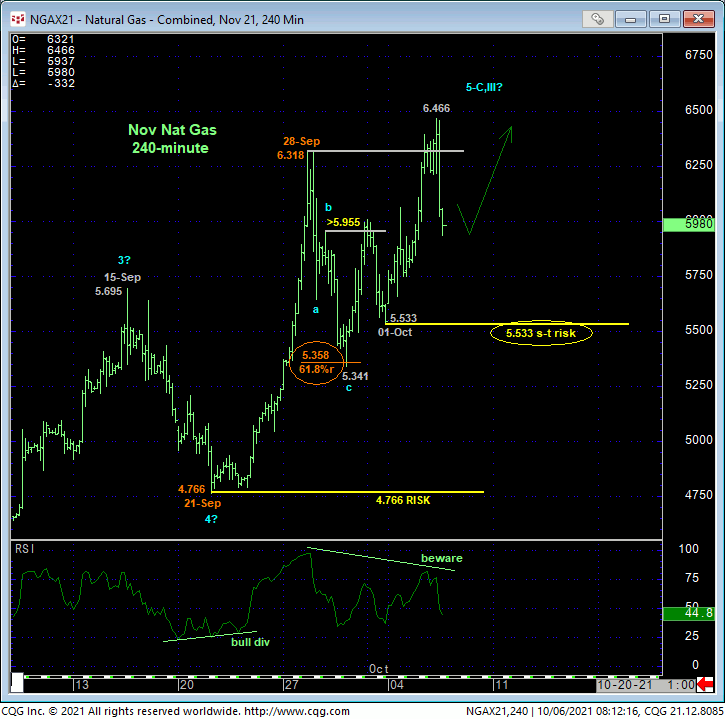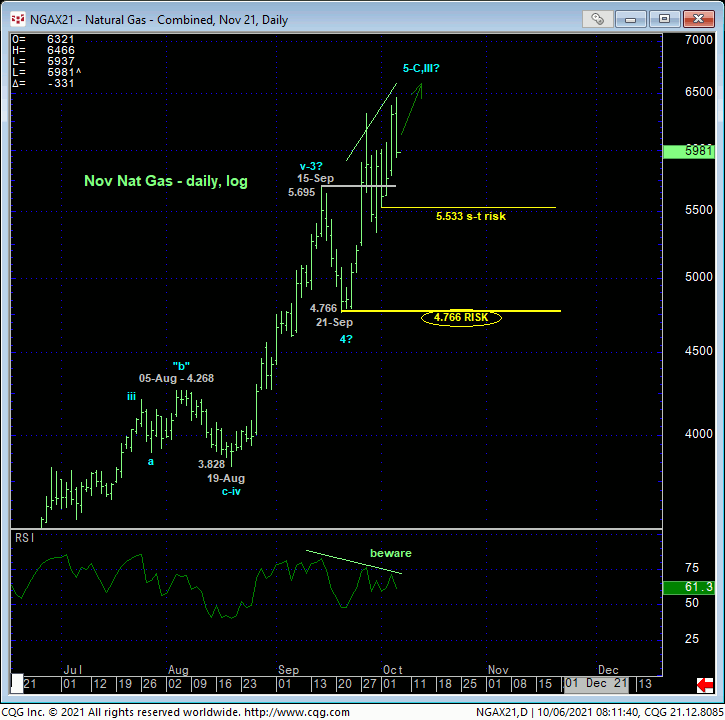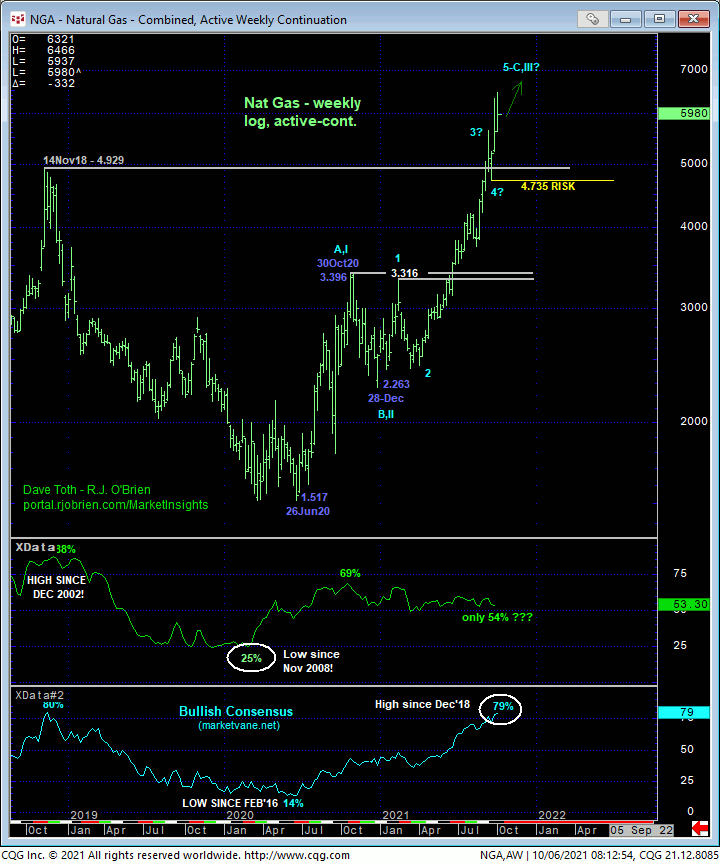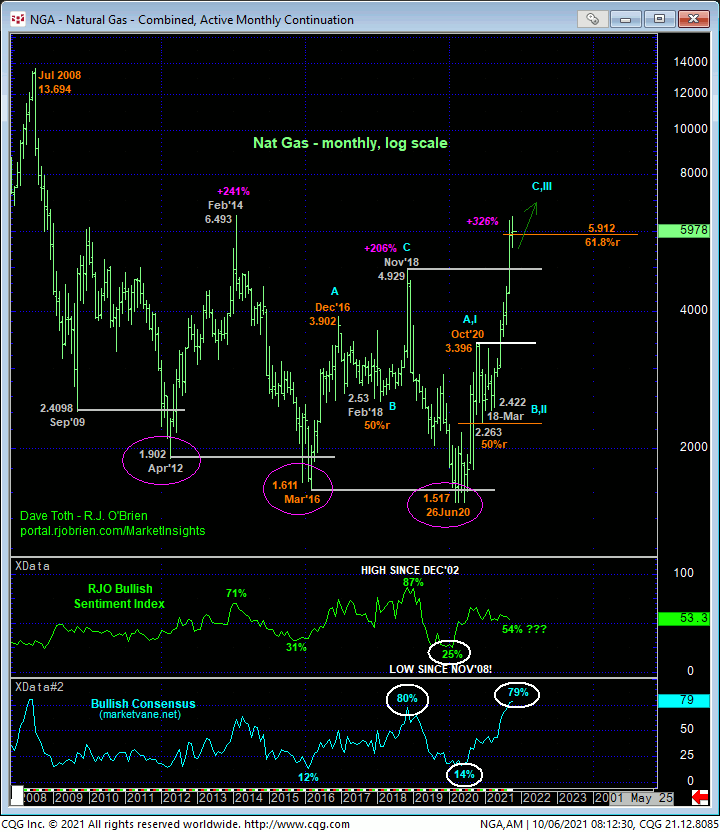
The market’s break the past two days above 28-Sep’s 6.318 high reaffirms the secular bull trend and leaves 01-Oct’s 5.533 low in its wake as the latest smaller-degree corrective low it would be expected to sustain gains above to maintain a more immediate bullish count. It’s failure to do so would confirm a bearish divergence in admittedly short-term momentum that would be of an INsufficient scale to conclude a broader top. But “up here” at 7-YEAR highs and after a fantastic bull move, even a short-term momentum failure would have to be respected as an early start to a broader peak/reversal threat. Per such, we’re defining 5.533 as our new short-term risk parameter to a still-advised bullish policy and exposure.


Of course, we cannot conclude a major top from proof of only smaller-degree weakness below a tight risk parameter like 5.533. Only a glance at the daily (above) and weekly (below) log scale charts is needed to see that commensurately larger-degree weakness below 21-Sep’s 4.766 (4.735 on an active-continuation basis) remains MINIMALLY required to even threaten the secular bull trend. But for longer-term reasons discussed below, even longer-term commercial players would be advised to pare bullish exposure to more conservative levels on a failure below 5.533, acknowledging and accepting whipsaw risk (above whatever high is left in the wake of such a sub-5.533 failure) for much deeper nominal risk below 4.766.

One of the longer-term elements typical of major peak/reversal environments is frothy bullish sentiment, and the current 79% reading in the Bullish Consensus (marketvane.net) is the highest since Dec’18 that warned of and accompanied that period’s major top and devastating but opportunistic reversal. Oddly, the 54% reading in our RJO Bullish Sentiment Index of the hot Managed Money positions reportable to the CFTC shows a neutral/indifferent/confused view that might mean still further gains needed to suck this community in to buying the proverbial highs.
Another threat to the bull traders should acknowledge is the violent, spike-like manner in which the 2018 and 2014 bull trends ended, warranting deft management of bullish-turned-bearish exposure. Everyone knows that we’re in a period where there’s typically and understandably upward pressure on prices due to the upcoming winter months. Per such, it is quite notable that 2018 and 2014’s major bull trends ended promptly and decisively in Nov and Feb, respectively, right into the teeth of cold weather.
These issues considered, a bullish policy and exposure remain advised with a failure below 5.533 required for shorter-term traders to head to the sidelines and even for longer-term commercial players to pare bullish exposure to more conservative levels to circumvent or at least pare the depths unknown of another correction or major reversal lower. In lieu of at least such sub-5.533 weakness, further gains should not surprise.


